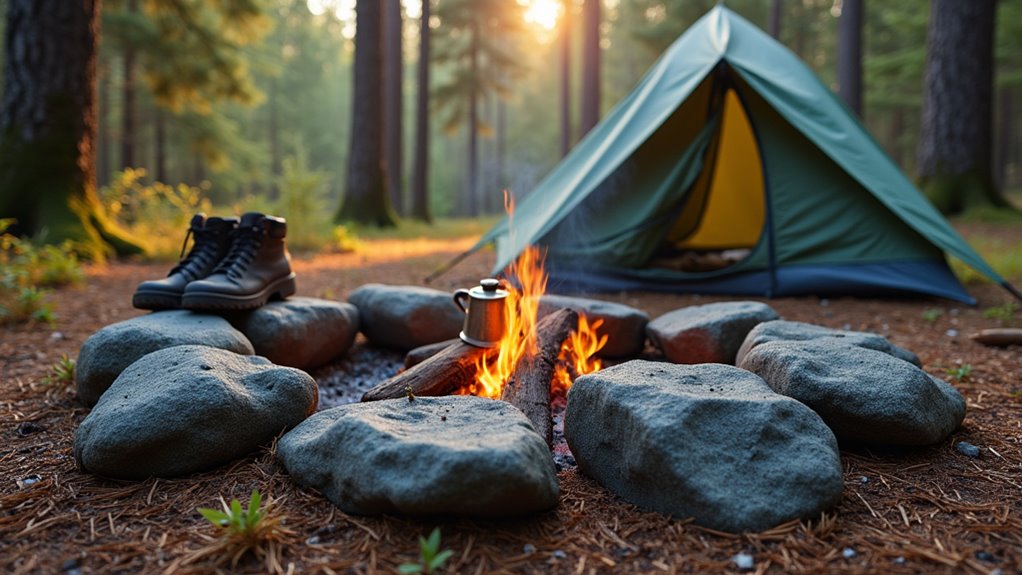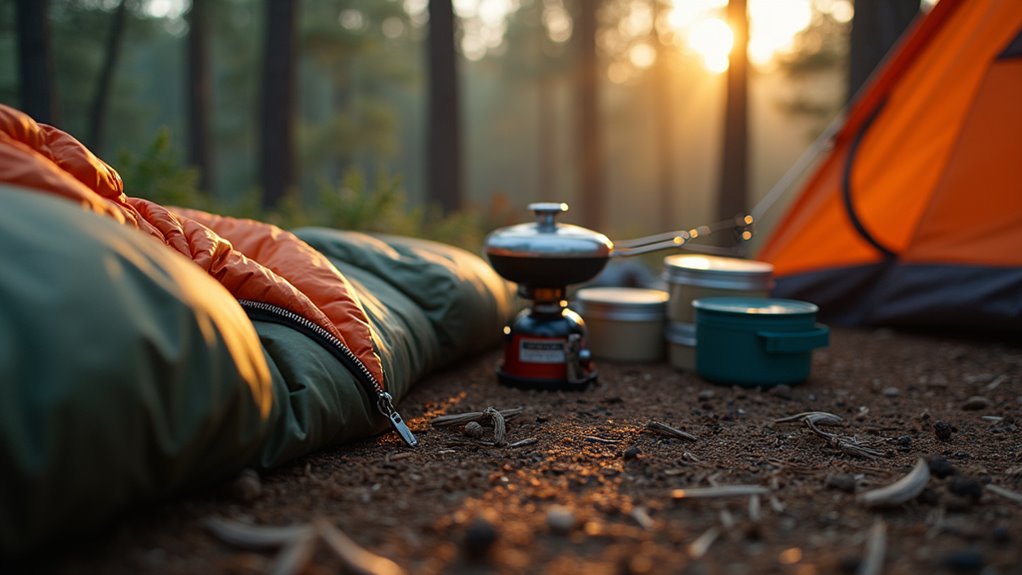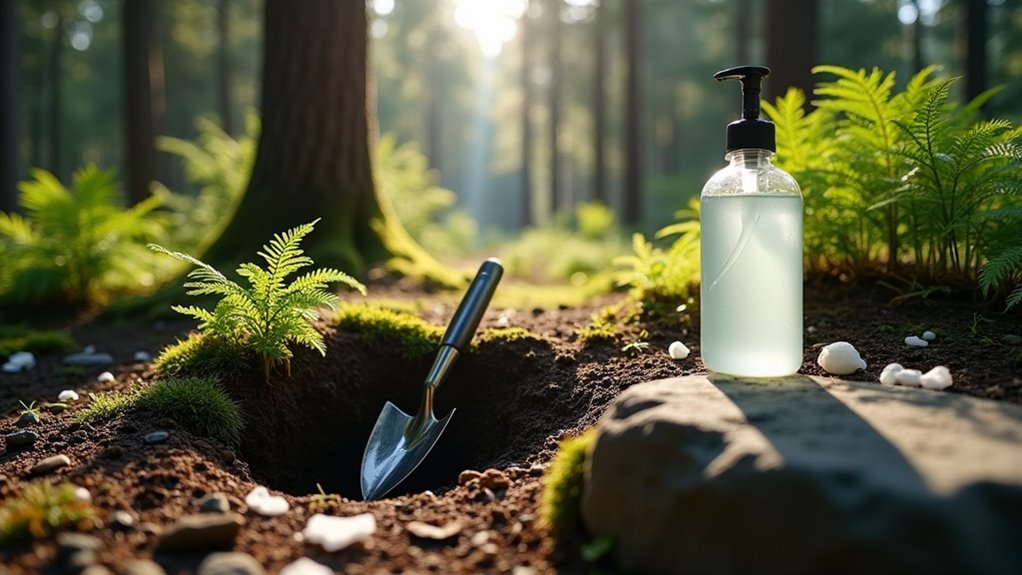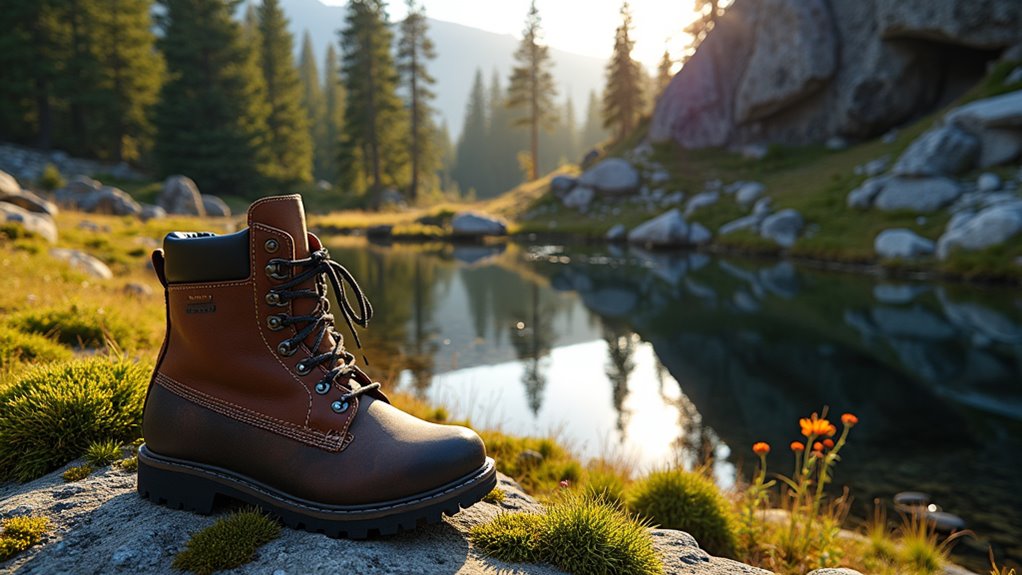Physical Address
304 North Cardinal St.
Dorchester Center, MA 02124
Physical Address
304 North Cardinal St.
Dorchester Center, MA 02124

From midnight wildlife encounters to gear failures, experienced campers guard secrets that could mean the difference between survival and disaster in the wilderness.
You think you know camping until you’re lying in your tent at 2 AM, listening to complete silence and realizing something’s very wrong. Real campers develop an entirely different relationship with the wilderness—one that’s built on hard-earned lessons, failed gear, and those moments when nature reminds you who’s actually in charge. There’s a whole world of unspoken camping truths that separate the weekend warriors from those who truly understand what it means to live outdoors.

When the forest suddenly goes quiet around your campsite, experienced campers know it’s time to pay attention. That eerie silence means something’s disrupted the natural order—and you need to figure out what.
Birds stop chirping when predators approach. Insects go silent before storms hit. Even small mammals freeze when they sense danger nearby. You’ll learn to distinguish between normal nighttime quiet and the unnatural hush that signals trouble.
Check your surroundings immediately. Look for fresh tracks, scan the treeline, and listen for breaking branches or rustling bushes. Keep your flashlight ready and stay calm. Most wildlife will move on if you don’t provoke them.
Don’t ignore your instincts when nature suddenly mutes itself. That silence is your early warning system. Ironically, when insects and other bugs fall silent, you might actually be safer from bug-free camping scenarios than during their typical active periods.
Every seasoned camper has experienced this maddening phenomenon: no matter where you move around the fire ring, the smoke seems to follow you like a loyal but annoying pet. You’ll shift to the left, and within seconds, you’re squinting through gray clouds. Move right, and the smoke drifts that way too.
This isn’t personal vendetta from the fire gods. Wind patterns create low-pressure zones behind your body, essentially pulling smoke toward you. Your body heat also creates updrafts that redirect airflow. Temperature differences between day and night cause unpredictable wind shifts.
Smart campers learn to read wind direction before choosing their seat. Look at nearby trees, grass, or toss some pine needles to gauge airflow. Position yourself upwind, and you’ll actually enjoy your campfire instead of constantly playing musical chairs. If you’re planning outdoor adventures that combine camping with rock climbing, understanding wind patterns becomes even more crucial for safety and comfort at your base camp.

Where exactly do you go when nature calls in the middle of nowhere? Experienced campers know the 200-foot rule: stay at least 200 feet from water sources, trails, and campsites. You’ll dig a cathole six to eight inches deep, carry it out if you’re in certain wilderness areas, and always pack out toilet paper—animals dig up buried paper, creating unsightly messes.
Smart campers bring a lightweight trowel and hand sanitizer. You’ll scout your spot during daylight, not stumble around with a headlamp later. Choose soft soil over rocky ground, and face downhill to avoid accidents.
For those seeking more comfort, camping toilets offer a convenient alternative to digging catholes while still maintaining wilderness etiquette.
The golden rule? Leave no trace means exactly that. What goes in the wilderness should either decompose naturally or come back out with you.
Your smartphone might promise sunny skies while storm clouds gather overhead, but seasoned campers trust nature’s built-in weather station instead. Real campers read the wilderness like a book, spotting weather changes hours before apps catch up.
You’ll learn to recognize nature’s reliable warning signs:
Pine needles opening wide means fair weather, while closing tight indicates rain. Your ears will detect pressure drops before barometers do. Trees bend and whisper secrets that satellites miss, making you a better meteorologist than any algorithm. When boat camping, you’ll need these natural forecasting skills even more since weather conditions on water can change rapidly and pose serious safety risks.

While Instagram-perfect spots near parking lots draw crowds like magnets, experienced campers know the real gems hide where most people won’t venture. That “perfect” lakeside site you scouted online? It’s probably muddy, windy, and packed with RVs blasting generators.
Real campers hike an extra half-mile past the obvious spots. They look for natural windbreaks, morning sun exposure, and level ground that isn’t obvious from the trail. The best sites often sit slightly elevated with good drainage, tucked behind boulders or tree lines.
You’ll find gold in spots that look mediocre on maps—dry creek beds with hidden flat areas, or small clearings just off secondary trails. Trust your boots over your phone. The effort to reach these hidden gems rewards you with solitude and better camping conditions. Planning ahead with a solid camping checklist ensures you’re prepared for whatever conditions these secluded spots might present.
Murphy’s Law runs the camping world with an iron fist—your tent zipper will jam during a downpour, your stove will sputter out when you’re starving at 9,000 feet, and your headlamp will die the moment you need to find the bathroom at 2 AM.
Experienced campers know this cruel reality and prepare accordingly. You’ll develop a sixth sense for potential failures and pack backups for critical items.
Smart campers don’t just hope their gear works; they assume it won’t and plan for inevitable breakdowns. The silver lining is that dealing with these challenges becomes part of the adventure—turning problem-solving into recreational activities that build resilience and camping skills.

Ever notice how the forest goes quiet just before you spot that deer? That’s because you’ve been under surveillance for minutes, maybe hours. Animals have home field advantage – they know every sound, scent, and movement pattern in their territory.
You’re not observing wildlife in the forest – the wildlife has been observing you long before you knew they existed.
Your heavy footsteps, synthetic fabric rustling, and soap-scented skin announce your presence long before you realize you’re being watched.
Experienced campers learn to read these signs: sudden bird silence, squirrels chattering warnings, or that prickly feeling on your neck.
Bears often shadow hikers from a distance, staying downwind. Deer position themselves behind thick cover, watching you pass.
Even small creatures like chipmunks act as sentries, alerting the entire forest network to your location through their calls.
Nothing exposes flaws in your camping setup quite like that inevitable 2 AM bathroom run. When nature calls in the dead of night, you’ll discover exactly what you did wrong during setup. Your headlamp’s mysteriously dead, your tent zipper’s stuck, and those guy-lines you thought were fine become ankle-breaking obstacles in the dark.
Real campers know this moment separates the prepared from the wishful thinkers:
Smart campers rehearse their nighttime routine before bed, checking headlamp batteries and clearing pathways. These essential camping tips become second nature once you’ve experienced the humbling reality of midnight navigation. Because stumbling around camp cursing at 2 AM isn’t camping—it’s suffering.
You’ve now been initiated into camping’s secret society—where silence terrifies you, smoke follows you like a loyal dog, and your gear conspires against you at 2 AM. You’ll find yourself listening to trees instead of meteorologists, talking to squirrels, and developing an unhealthy obsession with drainage patterns. Congratulations! You’re officially paranoid enough to survive the wilderness. Your friends will think you’ve lost it, but you’ll sleep soundly knowing you’ve mastered nature’s twisted sense of humor.